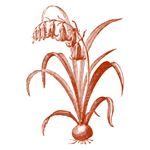by Natalie Ogbourne
About a decade ago, I agreed to do the makeup for a high school play, including the transformation of adolescent actors into middle-aged and even elderly characters. I knew nothing—nothing—about how to do this. Still, I forged ahead and ordered a stage makeup kit.
On the day it arrived, I was home alone with my under-the-weather littlest girl. I wanted to try it out and hers was the only face available, so she sat on the bathroom counter while I highlighted and contoured to give the appearance of lines and wrinkles and then smudged her skin with a dark creme named for its chronology rather than its color: old age. After a surprisingly short time, I had transformed her smooth, clear, six-year-old complexion into the saggy, wizened skin of an old woman. It was easier than I had imagined and also creepy.
Because I needed the practice, I turned to my own face. My daughter maintained her perch on the counter and watched—transfixed—as I added the same lights and shadows to my face as I had to hers. I wasn’t very far into the process when she broke her intent silence with an observation: “This will be so much easier on you, Mommy, because you already have lines on your face that you can follow!”
Let’s just say it would be even easier today.
Some days when I’m putting on my makeup, I notice this reality and sigh because I miss my young skin. And on those unfortunate days when I’m running behind and end up putting on my makeup in the car (while my husband gets us where we want to go) I even gnash my teeth and grumble a little because, in the presence of all that light, there’s no getting away from the exact condition of my complexion. But when I make the effort to take a more enlightened perspective, I remember that the lines, the wrinkles, the texture are more than they appear. They’re features on a map—not a trail map telling me how to get where I’m going but a topographical map reflecting where I come from and what I’ve walked through.
That forehead with the deep lines? It’s familial. My father has it. My brother has it. I have it. So do my brother’s children. And mine.
Those early-onset crows feet? I squint when I think. And it appears I think a lot.
The set of parentheses that frames my mouth? It arrived early, too, an unintended consequence of decades of smiling.
All those lines that appeared almost overnight during 2019’s multiple health crises? 2020 has been kind enough to deepen them and even deliver companions.
I may not like the lines but I love the life they represent and the topography they map out. It’s a map with no trails to follow, no indication of where I’m headed. A record of the terrain I’ve traveled. A history of the delights, the disappointments, even the dangers God’s brought me to—and through—along the way.
How I feel about my aging skin may seem a little silly. Vain even. How I walk through the aging process, though? That’s a facet of the landscape of life meant to navigate by faith.
So while it’s true that when I put on my regular makeup, the kind meant to make the most of what’s actually there rather than to artificially speed the clock for the stage, I sometimes sigh. And I might even give an occasional moment of longing and lament for the skin that once was. But then I press on with gratitude for what it represents–life to the full.

Natalie Ogbourne is a speaker, teacher, and reluctant hiker who has learned that finding her way in the woods helps her walk by faith in everyday life. A lifelong Iowan with a longstanding fear of cows, she has survived a snowmobile-windshield-to-nose standoff with a half-ton bison, a trip into the backcountry with recreationally unstable fly-fishing guide, and a trek across the edge of a cliff pursued by a bear. For encouragement to navigate the landscape of your life by faith, join her at natalieogbourne.com.
Cover photo by Tetiana SHYSHKINA on Unsplash





Oh Natalie! How exciting to see your work on this site! It’s such a great piece as well! 🙂
Well! What a fun surprise to meet you here! Thanks for your kind words. I’m so glad our paths crossed.
Thank you for this creative and positive spin on the lines on my face. As I’m aging, I do see my father’s face. This gives me joy!
Joy comes from so many little–yet meaningful things, doesn’t it?
Oh how I can relate to this story of the aging process. You have reframed it so beautifully and turned our attention to what is good. Thank you.
Attention to what is good is so key to traveling with a good, good God, isn’t it?